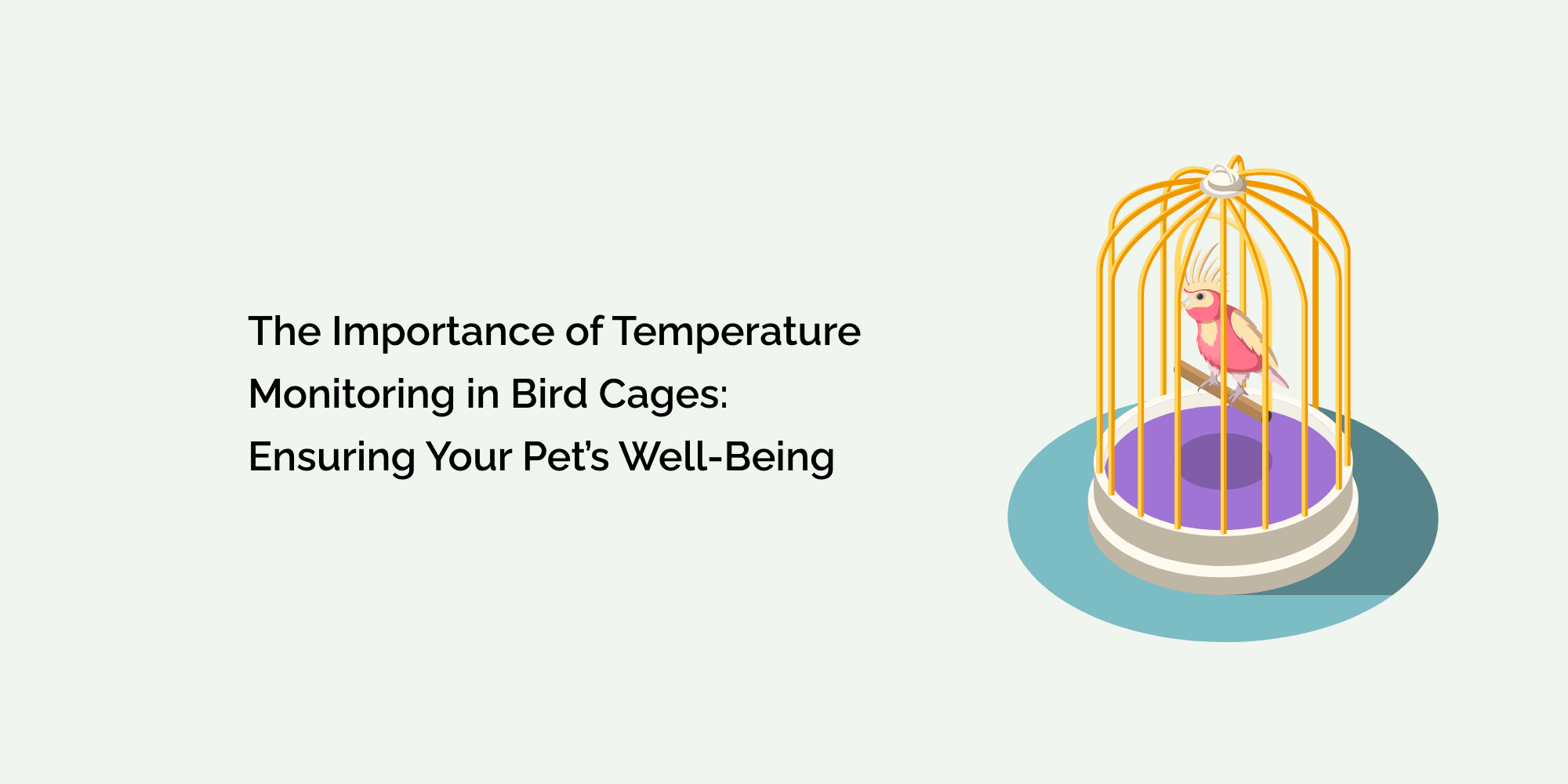Birds make delightful and intelligent pets, providing companionship and joy to countless bird enthusiasts worldwide. However, caring for birds involves significant responsibilities, including maintaining their optimal living environment. Temperature monitoring is a crucial aspect of bird care that directly impacts their well-being. In this blog, we will explore the importance of temperature monitoring in bird cages and how it ensures your feathered friends' health and happiness.
Understanding Birds' Sensitivity to Temperature:
Birds, like all animals, are sensitive to temperature changes. Unlike mammals, birds cannot regulate their body temperature as effectively. They are endothermic, meaning they generate body heat, but their ability to conserve or dissipate heat is limited. Most pet birds come from tropical or temperate regions, where they have adapted to specific temperature ranges. When kept in captivity, it is crucial to mimic their natural habitat to ensure their well-being.
- Hypothermia and Hyperthermia: Birds are susceptible to hypothermia (abnormally low body temperature) and hyperthermia (abnormally high body temperature). Drastic temperature changes can lead to stress, illness, and even death in extreme cases.
- Feather Puffing and Wing Drooping: Birds may exhibit behavioral changes in response to temperature discomfort. Feather puffing is a way for birds to trap air and create insulation, while wing drooping can be a sign of overheating. Monitoring temperature helps identify these cues early, allowing caregivers to act appropriately.
Optimal Temperature Range for Different Bird Species:
Different bird species have varying temperature requirements based on their natural habitat. Understanding the preferred temperature range for your pet bird is essential for maintaining their well-being.
- Tropical Birds: Tropical birds, such as parrots and cockatiels, thrive in warmer temperatures, typically between 70°F to 85°F (21°C to 29°C). Maintaining this range ensures they remain comfortable and active.
- Temperate Birds: Temperate birds, like canaries and finches, prefer slightly cooler temperatures, ranging from 65°F to 75°F (18°C to 24°C). Staying within this range helps them thrive and prevents potential health issues.
- Humidity Considerations: Besides temperature, humidity levels are essential for certain bird species. Tropical birds prefer higher humidity, while arid climate species may require lower humidity levels.
Benefits of Temperature Monitoring:
Implementing temperature monitoring in bird cages offers numerous advantages that contribute to your pet's overall well-being:
- Preventing Heat Stress: In warmer climates or during summer months, birds are at risk of heat stress. Heat stress can lead to dehydration, loss of appetite, and lethargy. Monitoring the temperature in their environment allows caregivers to take corrective measures, such as providing additional shade and water.
- Avoiding Cold Stress: In colder environments or during winter, birds may experience cold stress, which weakens their immune system and makes them more susceptible to illnesses. Maintaining an appropriate temperature helps prevent these issues.
- Early Detection of Illness: Changes in temperature preferences or behavioral cues may indicate underlying health issues. Regular temperature monitoring helps identify potential illnesses early, enabling timely veterinary intervention.
- Improving Breeding Success: Maintaining the right temperature and humidity is crucial for breeders. Proper temperature monitoring can increase breeding success rates and the overall health of the offspring.
Essential Tools for Temperature Monitoring:
To ensure accurate temperature monitoring in bird cages, several tools and methods can be employed:
- Thermometers: Digital thermometers with remote probes are ideal for monitoring the temperature inside bird cages. Place the search at the level where the bird typically perches to obtain the most accurate reading.
- Hygrometers: For species that require specific humidity levels, hygrometers can measure and display the humidity inside the cage. This aids in maintaining the optimal environment for your pet.
- Intelligent Monitoring Systems: Modern intelligent monitoring systems offer real-time temperature and humidity tracking with the convenience of remote access through smartphones or computers. Some systems even send alerts if temperature levels exceed preset limits.
- Thermal Imaging Cameras: Thermal imaging cameras can be helpful for large aviaries or bird rooms, enabling caregivers to visualize temperature variations across the entire space.
Creating the Ideal Environment:
Apart from temperature monitoring, several other factors contribute to creating a comfortable and stimulating environment for your pet bird:
- Proper Cage Placement: Avoid placing bird cages near windows or direct sunlight, as this can lead to significant temperature fluctuations. Drafts should also be minimized, as they can cause discomfort to your feathered companion.
- Proper Ventilation: While avoiding drafts, it is essential to ensure adequate ventilation to prevent the buildup of stale air and potential respiratory issues.
- Providing Shade and Perches: Inside the cage, offer various perches at different heights to allow the bird to regulate its temperature comfortably. Providing shade within the enclosure helps the bird find relief from direct sunlight or heat lamps.
- Fresh Water and Diet: Always ensure a fresh and clean water supply. Hydration is crucial for birds, especially during extreme weather conditions. Additionally, a balanced diet that meets the nutritional needs of your pet bird contributes to overall well-being.
- Seasonal Adjustments:
Throughout the year, environmental temperatures fluctuate, necessitating seasonal adjustments in bird care:
- Summer Precautions: During hot summer months, place the bird cage away from direct sunlight, and provide additional water sources to help birds stay hydrated. Consider using fans or misters to cool the area around the cage.
- Winter Preparations: Provide extra bedding material or cozy nests inside the cell in colder climates. Ensure the cage is away from drafts and hard windows. You may also use cage covers at night to retain warmth.
Conclusion:
Temperature monitoring is critical to bird care, as it directly affects their well-being and overall health. By maintaining the optimal temperature range for different bird species, caregivers can prevent heat or cold stress, identify health issues early, and improve breeding success. Utilizing modern monitoring tools and implementing seasonal adjustments create a comfortable and safe environment for our feathered companions. Remember that each bird species has unique temperature preferences, and understanding these needs will help ensure your beloved pet bird's long and happy life.








